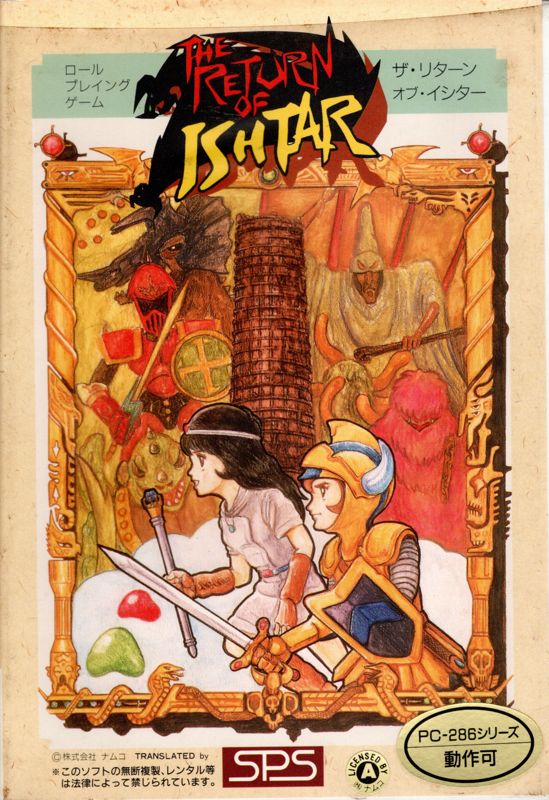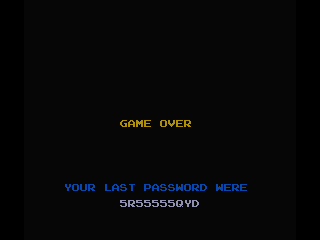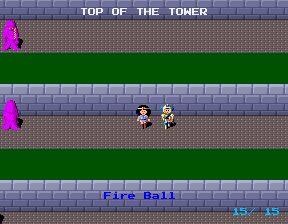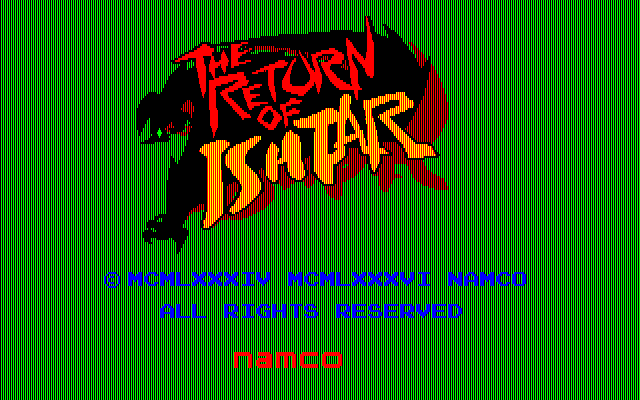Retro Replay Review
Gameplay
The Return of Ishtar doubles down on the cooperative action that made its predecessor memorable, requiring two players to work in tandem throughout its 128 levels. One player guides Ki, a sorceress whose magic attacks can clear groups of weaker enemies or trigger hidden switches, while the other takes the role of Gilgamesh, a sword-wielding knight specializing in close-quarters combat. This dynamic creates a fast-paced rhythm of mutual support: Ki softens the foes from a distance, then Gilgamesh moves in to deliver the finishing blow and protect her from harm.
Puzzle elements are woven organically into the dungeon crawl, with locked doors, hidden buttons, and teleportation gates that demand careful exploration. Players must communicate to locate keys and special items, mapping out each area and noting which exits can only be accessed once certain tasks are completed. Though each individual puzzle is relatively light, the cumulative effect of multiple obstacles in a single screen can be surprisingly brain-teasing, particularly under the pressure of swarming monsters.
The password system is an old-school boon for longer play sessions. At the end of each level, you’re given a code to input at your next gaming session, saving your progress and allowing you to return exactly where you left off. This prevents the frustration of starting over from the ground floor of the tower, an issue that plagued many contemporaries with similar difficulty curves.
Difficulty ramps up at a steady clip, with later stages introducing new enemy types that require specific strategies to defeat. Boss encounters—though not numerous—feel appropriately epic, combining several attack patterns and environmental hazards in a way that tests the full range of both characters’ abilities. For players who relish teamwork and coordination, The Return of Ishtar offers a consistently challenging experience that rewards memorization, cooperation, and quick reactions.
Graphics
Visually, The Return of Ishtar embodies the charm of mid-1980s 8-bit hardware. Character sprites are small but well-defined, ensuring that Ki’s glowing magic projectiles and Gilgamesh’s sword swings are always clear, even in the heat of combat. Enemies are distinguishable at a glance, from scuttling scarabs to ghostly apparitions, allowing teams to react to threats without fumbling for identification.
The tower’s environments are rendered in a limited palette, yet each floor feels distinct thanks to clever use of color and tile design. Mossy stone walls give way to crystalline caverns and lava-lit chambers, keeping visual fatigue at bay during marathon sessions. Animated elements—such as flickering torches and rising water—may be simple, but they infuse each level with atmosphere and a sense of continuity as you ascend higher.
Item icons, keys, and special artifacts are all presented with clear, bold outlines, making it easy to spot pickups even in crowded rooms. The user interface is minimalistic, displaying essential information like lives and magic power without encroaching on the action. Overall, the graphical presentation remains faithful to the era while prioritizing readability and functional aesthetics—an important consideration for a title so reliant on split-second maneuvers.
For modern audiences, The Return of Ishtar’s visuals may evoke a strong sense of nostalgia. The retro look is unlikely to win awards for cutting-edge design, but its crisp animations and varied level styles stand out among contemporaries. The visual cues that guide cooperative play—markers for hidden doors or safe zones—are subtle yet effective, demonstrating thoughtful design rather than flashy graphics for their own sake.
Story
While narrative is not the primary focus of The Return of Ishtar, it builds nicely on the lore established in The Tower of Druaga. You once again enter the sprawling tower of Babylon, but this time in a race against time to rescue the maiden Ki—whose own powers are vital to undoing an ancient curse. The premise is simple but serviceable, setting the stage for a high-stakes adventure that unfolds across dozens of perilous floors.
Dialogue is sparse, limited to brief exchanges between levels and occasional text when discovering special items. Nevertheless, these snippets of lore create a compelling backdrop: Ishtar’s fate hangs in the balance, and Gilgamesh’s promise to see her safely home imbues every battle with emotional weight. The sense of partnership between the two protagonists resonates through the gameplay itself, as co-op mechanics echo the characters’ mutual reliance.
Boss encounters are often introduced with short cinematic interludes or larger-than-life sprites that underscore the gravity of each confrontation. While there is no branching storyline or alternate endings, the straightforward plot serves its purpose—driving you onward through the tower’s labyrinthine halls. In this case, brevity works to the game’s advantage, allowing the action and puzzles to take center stage without unnecessary narrative detours.
For players who enjoy a lightly woven mythos that ties their actions to a larger quest, The Return of Ishtar delivers just enough story to keep motivation high. It strikes a balance between classic arcade simplicity and the more involved narratives emerging on home consoles at the time, making the journey feel both epic in scope and immediate in its demands.
Overall Experience
The Return of Ishtar stands out as a cooperative classic that rewards teamwork and strategic thinking. Each session feels like a shared puzzle-solving expedition, where communication and complementary skills are just as important as button-mashing prowess. If you have a reliable partner, the joint exploration of 128 uniquely designed floors can become an engrossing ritual that keeps you coming back for more.
Replayability is high, thanks to multiple secret exits and hidden rooms that can be missed on a first playthrough. Mastery involves learning optimal routes, memorizing enemy placements, and synchronizing your actions to avoid getting separated—challenges that encourage experimentation and repeat runs. The password system further supports extended play, freeing you from the constraints of single-sitting accomplishments.
That said, the two-player requirement may present a barrier for solo adventurers or those without a local co-op option. While you can technically swap controls between sessions, it lacks the fluidity of true single-player design. For this reason, The Return of Ishtar shines brightest in living rooms and gatherings, where two friends can share a controller and celebrate each milestone together.
Overall, The Return of Ishtar is a standout example of early co-op action-puzzlers, combining clear visuals, steadily escalating difficulty, and a light narrative that propels you through its towering gauntlet. Prospective buyers looking for a retro challenge, especially in the realm of cooperative gaming, will find it a rewarding and memorable experience that holds up well within its genre.
 Retro Replay Retro Replay gaming reviews, news, emulation, geek stuff and more!
Retro Replay Retro Replay gaming reviews, news, emulation, geek stuff and more!









Reviews
There are no reviews yet.